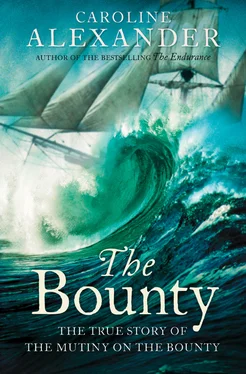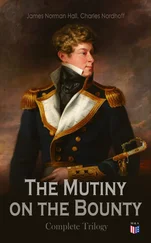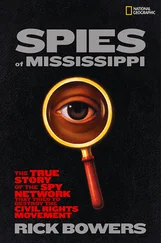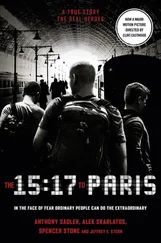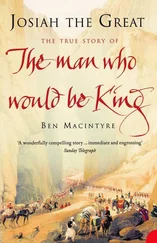Following his marriage, Bligh had served as a fifth or sixth lieutenant in a series of short commissions during the winding down of the American War of Independence. By 1782, the navy had begun to scale back and reverted to offering the meagre fare of peacetime – two shillings a day and no opportunity for prize money from enemy ships. William Bligh, newly married and now with a young daughter to support, had at first lain low in the Isle of Man, where life was famously cheap, and where, as he told a relative, he could at least get plenty of books and ‘improve’ himself by reading. But these circumstances were tolerable for only so long, and by the middle of 1783, Bligh had received permission from the Admiralty to take mercantile employment abroad; so for four years, until his appointment to the Bounty , Bligh had plied the rum and sugar trade from England to the West Indies for his wife’s wealthy merchant uncle, Duncan Campbell.
Bligh was of average to below-average height. His hair was black, his skin ‘of an ivory or marble whiteness’; in later years, it would be remarked of him that ‘his face, though it had been exposed to all climates, and to the roughest weather, was, even as years began to tell upon him, far from appearing weather-beaten, or coarse.’ He did not, then, have the look of a rough ‘salt’. Nonetheless, he was widely experienced, having served in time of war, in voyages of discovery and in the merchant trade, from the Pacific to the West Indies. Other considerations are likely to have recommended him in Admiralty eyes. While it was the often expressed opinion of Joseph Banks that the Bounty voyage was now exclusively about breadfruit transportation, the Admiralty had one other, highly regarded objective, as was clear from the sailing orders Bligh eventually received: after leaving Tahiti, his orders instructed him, ‘you are to proceed from thence through Endeavour Streights (which separate New Holland from New Guinea).’ The navigation and survey of this important, little-known and dangerous passage – where Cook himself had run aground – was of great interest to the Admiralty, and there were few naval men better qualified, or available, to undertake this than Captain Cook’s able sailing master.
For William Bligh, now not quite thirty-three years old and a lieutenant in His Majesty’s Navy, the command of Sir Joseph Banks’s prestigious breadfruit journey implied more than a return to naval service from the obscurity of the sugar trade – it put Bligh squarely in Cook’s footsteps.
The object of all the former voyages to the South Seas,’ Bligh himself wrote, ‘has been the advancement of science, and the increase of knowledge. This voyage may be reckoned the first, the intention of which has been to derive benefit from those distant discoveries.’
The vessel that Bligh would refer to with habitual affection as ‘my little ship’ awaited him at Deptford Dockyard, on the Thames. The Bounty was a beautiful craft, lying solid and low in the water like the full-bodied merchant ship she was, blunt-nosed and square-sterned, surmounted by her three spirelike masts. Fixed under her bowsprit was the painted figurehead of a lady dressed in a riding habit. But for all the neatness of her lines, Bligh could have been forgiven for a momentary loss of heart at his first sight. Resolution and Discovery , the two ships carefully chosen by Captain Cook for his last expedition, had been 462 and 295 tons, respectively – and Discovery , as a consort, was markedly smaller than any of Cook’s previous ships, which averaged around 350 tons burthen. The Bounty was of 220 tons. At 85 feet 1 1/ 3inches long, and with a beam of 24 feet 4 inches, she was rated as only a cutter. Of more consequence to Bligh, a cutter did not rate a captain as her commanding officer, or even a commander (the rank Cook had held on his second voyage). William Bligh would therefore not be promoted as he had optimistically hoped, but would sail as a lieutenant; if he were addressed as ‘Captain Bligh’, it would be only out of courtesy. Given that he was to be gone for at least two years, this was an acute disappointment; at the very least, it meant two years more on a lieutenant’s pay.
It was Banks who, in consultation with David Nelson, the gardener chosen for the voyage, had made the final selection of the vessel from the few candidates the Admiralty had deemed suitable. A merchantman had been chosen, since carrying capacity was the main object. Banks had very definite ideas about how exploration vessels should be fitted out – so definite that they had cost him a place on Cook’s second expedition of 1772. At that time, it had been assumed by everyone, including Banks, that he would participate in this next grand adventure. But after the ship selected by Cook had been completely reconfigured under Banks’s supervision to accommodate his entourage – heightened, redecked, fitted with a new raised poop to compensate for the scientists’ quarters – the ship had proved too top-heavy to sail. She was restored to her original state, and Banks withdrew from the enterprise in pique.
Fifteen years later, Banks’s ideas on how botanical expeditions were to be conducted were still adamantly precise. ‘As the sole object of Government in Chartering this Vessel in our Service at a very considerable expense is to furnish the West Indian Islands with the Bread-Fruit & other valuable productions of the East,’ Banks wrote in a draft of his instructions in early 1787, ‘the Master & Crew of her must not think it a grievance to give up the best part of her accommodations for that purpose.’ There were to be no dogs, cats, monkeys, parrots, goats or any of the other animals traditionally found on ships, excepting those kept in coops for food. Arsenic must be kept out for cockroaches and rats and ‘the Crew must not complain if some of them who may die in the ceiling make an unpleasant smell.’ Banks had estimated that ‘a Brig of less than 200 Tons Burthen would be fully sufficient.’ He also wanted a small crew – ‘no more than 30 Souls’, including the gardener – so as not to take up space that could be used by plants. An astronomer had also sought to go along ‘to observe the expected comet’, but Banks refused; in his eyes, the Bounty’s voyage had one object only – breadfruit.
This was made clear to Bligh personally from the moment he first looked over his new ship. Descending the companionway from the upper deck, Bligh entered the great cabin, the captain’s private quarters that encompassed the breadth of the vessel and extended from the transom almost to the mainmast. Paned windows at the stern and quarter windows flooded the spacious area with light. This was where the captain could retire for privacy and rest, where he could invite his officers and young gentlemen. For a navigator and draftsman like Bligh, it was also his library, where he could spread out his charts and drawings, and store his collection of books.
But the Bounty ’s great cabin was not destined for the personal use of Lieutenant Bligh – it was to be converted into a nursery for the plants. Fitted with skylights and air scuttles, it would contain staging cut with holes for 629 pots; it also had a stove to ensure that the plants would be warm in cold weather. An ingenious drainage system provided a catchment for surplus water, which could be recycled. Bligh’s quarters would be improvised immediately forward of the nursery, to the starboard side of the companionway. A windowless cabin measuring eight by seven feet would form his sleeping area. Adjoining it was a small pantry where he would take his meals; if he wished to invite others to his table, they would meet him here, in this cramped, undignified space. Cook, too, on his first voyage, had shared his day cabin with Banks and his scientist and draftsman, but on that occasion the usurpation of the captain’s space into a kind of gentleman’s working library had not resulted in any symbolic loss of dignity. Unlike Cook, Bligh was not to enjoy an active and collegial engagement with his partner in this enterprise. Shunted into his cramped, dark solitude by the pots of Joseph Banks, he was effectively relegated to the role of botanical courier.
Читать дальше
